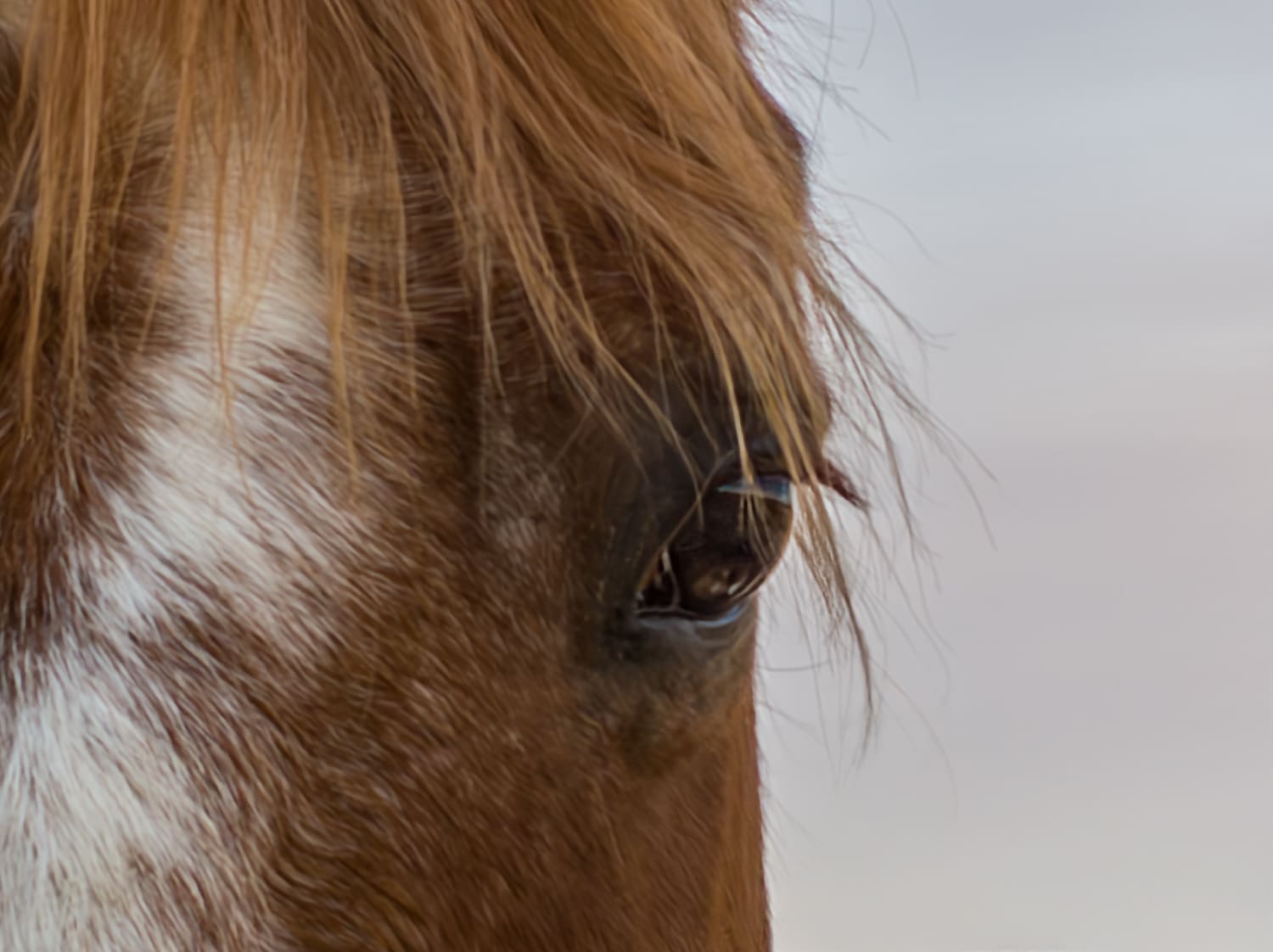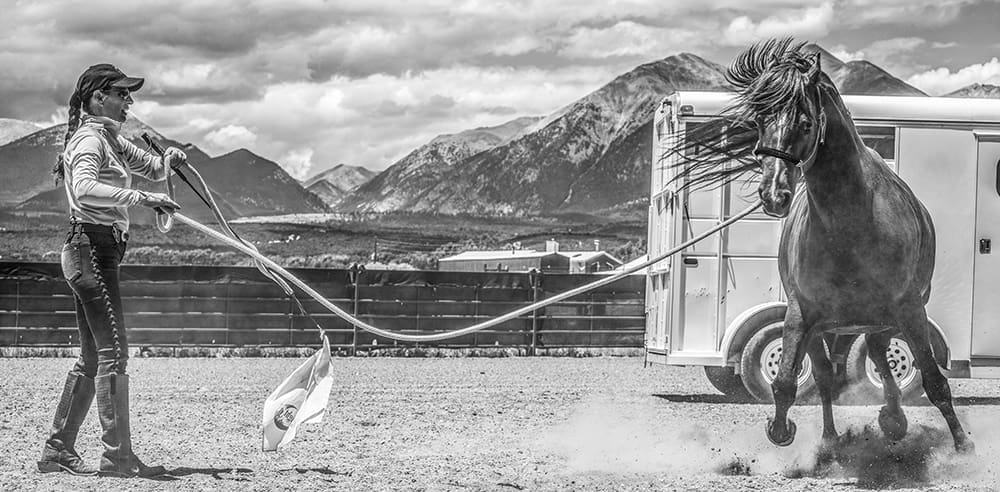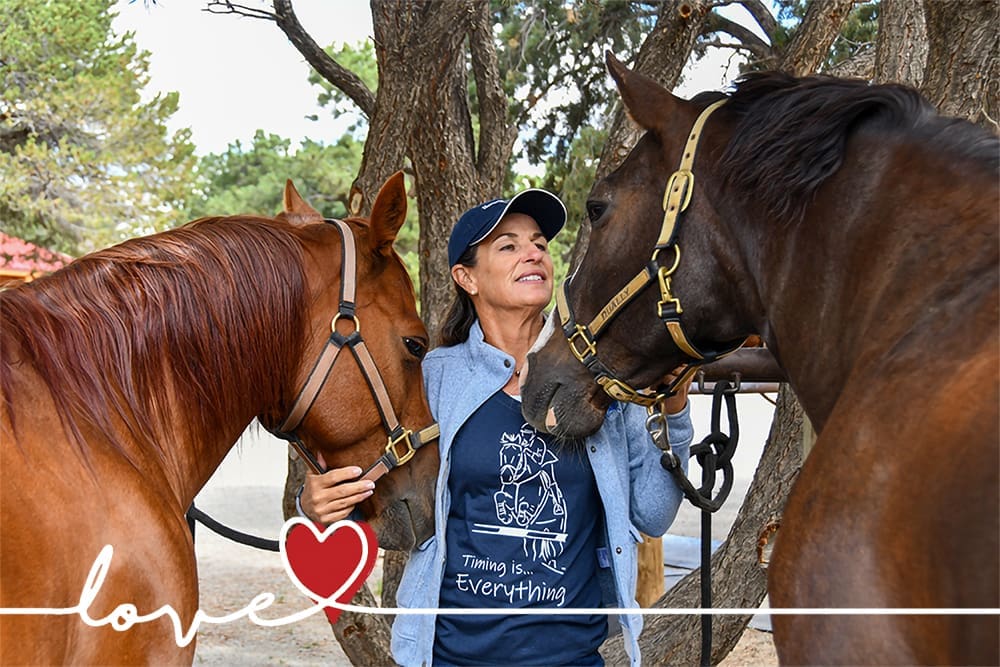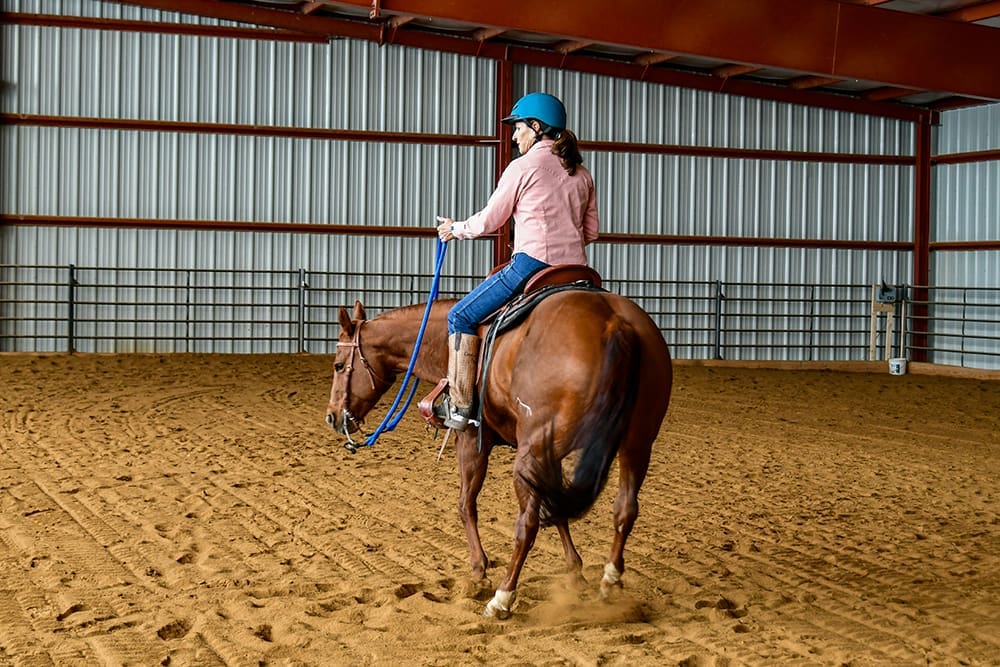Water crossings are common on most every trail. Do you and your horse cross without worry, or do you ride along the shore hoping the water will dwindle to a drip? Does your horse move obediently and quietly forward across creeks and streams, or is he anxious and ready to jump even the smallest water source?
Here’s help if your horse isn’t used to crossing water slowly and safely or if you’re not sure how to make your crossing as safe as possible. Top clinician/trainer Julie Goodnight demonstrates the safe and proper way to introduce your horse to a creek water crossing and how to make sure you cross slowly and safely. Goodnight will help you identify the best place to cross and guide you through a step-by-step process to make sure that you and your horse are relaxed and take your time as you move through the ripples and currents.
Crossing water is a perfectly natural task for your horse—if he’s had the opportunity to cross, play in and even drink from an open water source. If your horse is often turned out in open areas or was bred and raised on a large ranch, there’s a chance that he’s crossed water with the herd. If that’s the case, your job may be easier. The sight and sound of moving water won’t be brand new. You’ll be able to focus on safe crossing habits—and focus on reminding your horse not to play—instead of worrying about your horse’s fears and reactions.
Keep in mind that many horses aren’t familiar with open water. If your horse was born and raised in a stall, his only encounters with water may be to drink from a bucket or get a bath from a hose. You’ll need to make sure that your horse is properly introduced to water that sounds, smells and feels like a new experience.
Exercise Prep
Horsemanship lesson: You’ll learn a safe sequence of steps to help you introduce a horse of any age to water and learn how to cross safely.
Why you need it on the trail: Most every trail has a water crossing that should be crossed safely and purposefully. Goodnight says she often sees riders who think it’s fun to jump water or to allow their horse to speedily maneuver to the other side. Jumping water is a great danger because you can seldom be sure of the footing near water. It also suggests that your horse is spooked by the noise and feel, and is moving of his own accord to flee the scene instead of obeying your precise go-forward cues.
When riders do stop and relax, horses are often allowed to paw and play—but these behaviors suggest a horse is ready to roll. While rolling is in general a bad idea when a rider is on board, rolling in moving water puts riders at risk for being swept away.
What you’ll do: You’ll help your horse negotiate a crossing by invoking his herd instincts. With a friend to lead you, your horse will see that he’s safe, learn to stand and relax mid-stream, then understand that your usual riding cues apply in this new environment as you ride along with the current instead of teaching your horse to rush across.
What you’ll need: Enlist a friend with a trusty, been-there-done-that trail horse who can act as your horse’s mentor and stay with you throughout your training session.
Ask friends who frequently ride in your area what water crossings are appropriate for first-time training sessions. As a general guide, look for a trail with a water crossing that’s flat and well traveled by horses. The stream shouldn’t be too deep or too fast.
Look for a water crossing that you can walk across without the water reaching above your knees, and without a current that would prompt you to lose your balance. Look for clear water that allows you to see the footing on the bottom, and be sure to avoid muddy and boggy crossings—or ones with too much slick rock.
Make sure that your horse isn’t wearing a tie down or any tack that might prevent him from using his head and neck for balance. If the water is unexpectedly deep and he needs to swim, a tie down can be lethal when the horse needs to raise his head above water to breathe.
Notes: This is a good skill to teach your horse when the water in your area is low. Make sure to check with your local forest service or area wilderness guide to find out what the water conditions are where you’d like to practice crossing.
Skills your horse will need: Your horse should be responsive to your cues to move forward, stop and back as well as side to side. Make sure that you have good steering and speed control at the walk and trot while riding in open spaces. If your horse is familiar with easy trail obstacles (such as crossing poles or logs), you can better trust that your horse will go where you ask.
Step 1: The Introduction
Outfit your horse in his usual riding gear and set out on the trail until you reach your suggested and pre-planned water crossing. Ask your riding buddy to ride ahead then follow her to the water’s edge. When your horse reaches the shoreline, ask him to move forward and encourage his investigative behavior by reaching your hands forward and applying gentle leg pressure. If your horse seems curious, allow him to sniff and feel the water then encourage him to move forward and step in.
Make sure your horse doesn’t put his head down and rock back to jump the creek; jumping water is not a good trait in a trail horse. If you feel your horse stretch his neck forward then rock back, sharply correct him with a “whoa” command. As he investigates, don’t allow your horse to stand and paw at the water—pawing behavior isn’t a cute and playful habit, it’s a precursor signaling that he’s about to lie down to roll.
Let your horse sniff and sip the water if he wants and even play in it with his nose—just be careful that too much play may also lead to lying down. Be vigilant and promptly tell your horse “whoa” and pull up and back on the reins if you feel that he’s shifting his weight or playing too much.
Take all the time you need to walk your horse into the water. Be patient with him during his investigation as long as he keeps looking at the water and doesn’t threaten to turn his nose away or back up. At this point, you’ve pointed him to the water and expect him to pay attention to the new experience. Insist that his focus stays ahead in the direction you are asking him to go. It’s okay to let him stand still, look forward, drink or sniff, but don’t let him turn away or back up. If you do, you’ll be training your horse that water is something to avoid and allowing him to choose where he goes.
Step 2: Wade & Wait
When your horse seems calm and willing to pay attention to the water’s sights and sounds, it’s time to move in. Your riding buddy should already be ahead of you and in the stream. Ask her to stand in the middle of the stream, face upstream (with her horse’s head in the direction of the water’s source so that her horse isn’t knocked off balance).
Cue your horse to walk on—providing ample rein and applying gentle pulsating leg pressure to encourage him to move on. When you reach the middle of the stream, ask your horse to stop and relax your body and reins. Your calm position will show your horse that the water is a safe and comfortable place to be. It’s important to “hang out” for a few minutes until your horse stands quietly. Be patient! This literal “soaking time” will teach your horse that it’s not okay to rush across the water.
Even a seasoned trail horse may need to work on this training step. It’s important to cross water slowly and precisely so that you can choose the best and least-slippery path. And it’s important that your horse does not rush and plunge across.
Step 3: Downstream Detour
Next, instead of continuing across the stream to dry land, change direction and lead your horse up and down the waterway. Spending some time in the water will help him get used to the feel of cold water on his legs and splashes to his barrel. Your water ride will also reinforce the lesson that you started in Step 2—don’t rush.
Spend 5 to 10 minutes walking up and down the stream. Pause every few moments and allow your horse to stand still in the water. When he seems quiet and confident, it’s okay to ride him across and out of the stream at a place you designate. Make sure the entrance and exit from the water is safe and reasonably easy for your inexperienced horse. Steep, slick embankments are scary for a horse and can make him concerned about future water crossings; slipping can cause injury as well.
Teach Respectful Drinking
Chances are, your horse will attempt to drink as you’re working on your water crossing skills. This is the perfect time to instill proper drinking behaviors as well as water crossing safety.
Different types of trail riders have different ideas of what good drinking behavior is for a horse. Some trail riders want their horses to drink at any and every crossing in order to stay hydrated. Others want their horse to march obediently down the trail, preferring to cross without stopping to keep the ride moving and only drinking at designated times. Whatever your idea of perfect water behavior is, instill it in your horse from the beginning.



